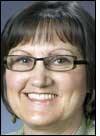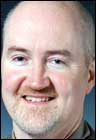Oct 21, 2009When the Virginia Mason Medical Center's clinic in Kirkland, Wash., opened its new facility in spring 2009, it was not quite like any other. This clinic, which has 20 physicians on staff treating a total of approximately 400 patients daily, turns the traditional idea of a clinic and waiting room on its head. Rather than sitting in a waiting room until an employee escorts them to an exam room, patients at Virginia Mason Kirkland go through a registration process similar to that used when checking into a hotel, and are then assigned an examination room, given directions on where to find it, and instructed to proceed immediately to that location.
To allow this process to work, the clinic is using a hybrid RFID-IR system provided by Versus Technology. The company's Enterprise VISion system enables the clinic's staff to track the locations of patients and workers, says Tom Ott, Versus Technology's national sales director, and to send alerts in real time so that staff members can adjust care according to patients' particular needs.
After registering at the desk, a patient is assigned a room and given a card indicating that room's number, as well as the section of the clinic (Mountain, Forest, Beach or Meadow) in which it can be found. Clipped to the card is a Versus battery-powered hybrid RF-IR tag. Every three seconds, the tag transmits RF and infrared signals simultaneously, both encoded with the same unique ID number. The RFID component transmits a 433 MHz RF signal, using a proprietary air-interface protocol; while the infrared component transmits a light signal imperceptible to the human eye.
The tag's ID number is input with the patient's data into the VISion software running on a back-end server. The staff can then access the software to track that individual's location throughout the facility, explains Shirl Diaz, Virginia Mason Kirkland's administrative director. The clinic has 153 Versus readers—seven of which are RFID, while 146 are infrared—installed in its ceilings throughout the facility, including both staff and patient segments of the building.
Each employee is assigned a permanent ID badge that also contains a Versus battery-powered hybrid RF-IR tag. The badge—which looks like a key fob and can clip onto the individual's clothing—transmits an ID number. Once physicians, clinical assistants or other staff members arrive for the day, the system knows where they are in the clinic at all times, and stores a record of those locations, along with a timestamp, thus allowing the medical center to locate individual personnel in real time, as well as store information related to their activities on any given day.
The IR function helps the clinic pinpoint the room in which the tags are located. The software can then interpret which physician is meeting with which patient, as well as how long they are in the examining room together, which helps the clinic analyze doctors' time spent with patients, and also determine where there is room for improvement in efficiency.
The system is being utilized for real-time monitoring, says Richard Furlong, an internal medicine physician at VM Kirkland. If, for example, a patient sits for too long in an examining room without being seen, a staff member can be alerted to visit that person, or to contact the physician assigned to him or her. It can also be used for analytics, Diaz says. "It allows us to look at our processes," she explains. "Why did this patient take longer than that patient?"
The system has increased efficiency, Furlong indicates, because as a physician, he has a better idea of which patients are ready, and of when he has a few free minutes to complete other tasks, such as responding to e-mails or placing phone calls.
When asked to explain why the clinic chose to adopt the new technology, Furlong answers, "I think this might reflect that Virginia Mason is a little different. We do have a head start when it comes to improving processes."



